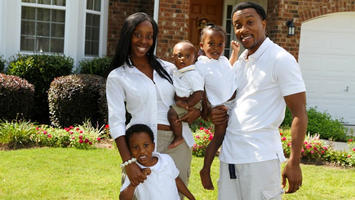
By now, everyone who's paid attention to the Trump Administration lately knows that the suburbs, however defined, look to figure very prominently in the 2020 presidential election. Racially explicit appeals are being made by President Trump in an effort to prove up his "law and order" bona fides and offer protection to what he views as a largely white suburban demographic.
However, there is growing evidence that American suburbs are in the midst of demographic change, causing us to question our assumptions and even change our views of what "suburbia" actually is. Their demographic change likely prompts changes in how policymakers should establish a new set of public policies for a swiftly changing slice of the electorate. Today's suburbs are moving past the early ideal of being bedroom communities housing downtown office workers, or later models of serving nearby office or industrial parks. As urbanism theorist and researcher Richard Florida says in the article referenced above, "...globalization, the decline of the old manufacturing economy, and the re-urbanization of the knowledge economy, is redefining the role and function of the suburbs."
Without question, suburbia is far more complex, diverse, and heterogeneous than it's ever been in the U.S. Florida specifically notes the rise of Black suburbia as a key contributor to suburban demographic change:
Between 1970 and 2000, the share of African Americans living in suburban Atlanta increased from 27 percent to 78 percent; while in greater Washington D.C it rose from 25 percent in 1970 to 82 percent. Those trends have continued to accelerate, according to the Lacy’s research. There are two parts to this African-American suburbanization. On the one hand, it is the result of low-income African Americans being pushed out of gentrifying parts of cities. And on the other, it involves the black middle class choosing to move to more upscale suburbs. Taken together, they add up to considerable shift."
However, Florida is also clear that that the suburbs will no longer be as socio-economically homogeneous as they've historically been, either. Immigration, displacement related to urban gentrification, and the choice of upper-middle income people of color to choose the same upward path of previous groups to the suburbs, taken in total, create a much more economically diverse suburbs.
This makes some people pleased or fearful, depending on what side of the complexity/diversity/heterogeneity debate you're on. That's up to you. But what I can do is present some observations I've made regarding Black suburbia in particular, using the Chicago metro area as a case study.
Chicago's Black population isn't as suburbanized as described in Atlanta or Washington, D.C., perhaps because Chicago's central city is dramatically bigger than either Atlanta or D.C. If you saw my earlier piece about defining suburbia and apply the method I used for various demographic groups in metro Chicago, you'll find this:

According to the 2019 American Community Survey from the U.S. Census Bureau, 51.5% of all Black residents of the Chicago metro area live in the central city, with 48.5% living in the suburbs or exurbs. Blacks are the only demographic group whose suburban population doesn't represent the majority, but there's still been a pretty dramatic shift over time. In 1990, about three-fourths of all Blacks in the metro area lived in the city.
It might be better to see the differences in city, suburban and exurban living patterns by demographic group by looking at this chart:

I like to put communities in a historical and geographical context, and Black suburbia is no different. Through my analysis of the Black suburban population nationwide, I've identified six types of Black suburban communities. As often happens when it comes to Blacks and Chicago, segregation plays a primary role in how today's Black suburban population is oriented. Here are the Black suburban community types:
Read the rest of this piece at Corner Side Yard Blog.
Pete Saunders is a writer and researcher whose work focuses on urbanism and public policy. Pete has been the editor/publisher of the Corner Side Yard, an urbanist blog, since 2012. Pete is also an urban affairs contributor to Forbes Magazine’s online platform. Pete’s writings have been published widely in traditional and internet media outlets, including the feature article in the December 2018 issue of Planning Magazine. Pete has more than twenty years’ experience in planning, economic development, and community development, with stops in the public, private and non-profit sectors. He lives in Chicago.












